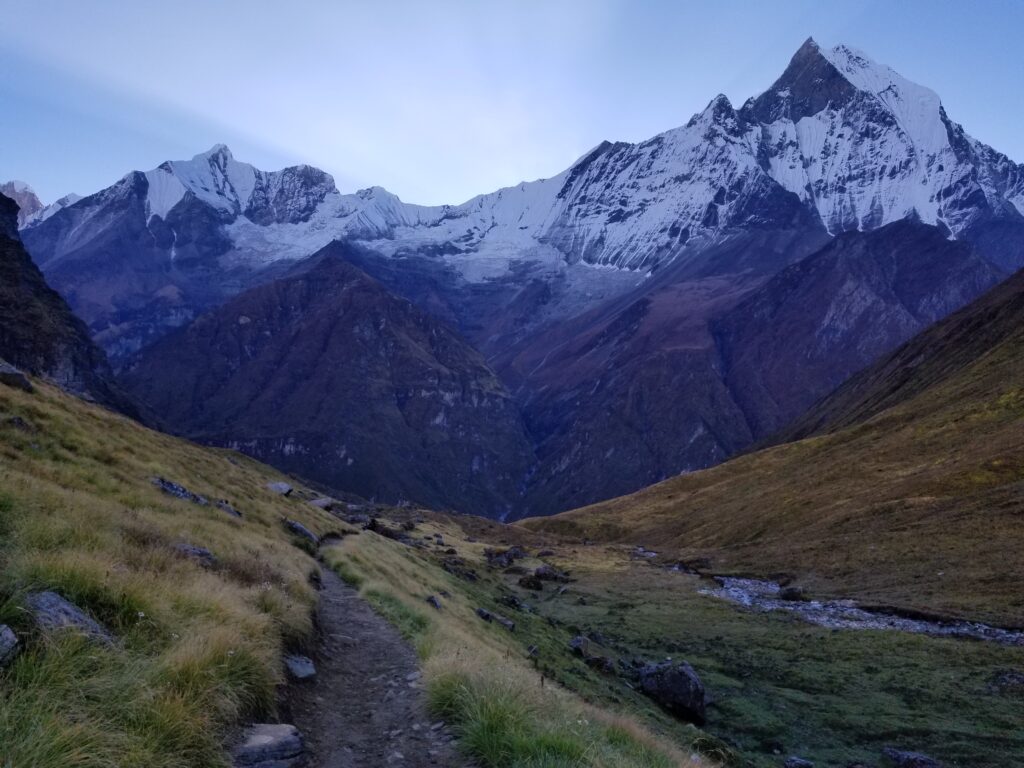High Altitude Sickness, also known as Acute Mountain Sickness (AMS), is a common health issue experienced by trekkers, mountaineers, and travelers who ascend to high altitudes too quickly without proper acclimatization. Nepal is a popular destination for high altitude trekking, and AMS is a significant concern for trekkers in this region.
There are three types of AMS:
Mild AMS: The symptoms of mild AMS include headache, fatigue, nausea, dizziness, and shortness of breath. These symptoms usually disappear within a day or two without any treatment.
Moderate AMS: The symptoms of moderate AMS include severe headache, vomiting, loss of appetite, and difficulty sleeping. These symptoms can last for several days, and medical treatment is required to manage them.
Severe AMS: The symptoms of severe AMS include shortness of breath, blue or gray lips or fingernails, confusion, and a rapid pulse. Severe AMS is a life-threatening condition, and immediate medical attention is necessary.

The reason for AMS is the decrease in air pressure and oxygen level at higher altitudes. As altitude increases, the amount of oxygen in the air decreases, and the body has to work harder to get the same amount of oxygen it needs. If the body is not given enough time to acclimatize to the altitude, AMS can occur.
Anyone can develop AMS regardless of age, gender, and fitness level. However, some people are more prone to AMS than others, including those who have had AMS before, those who have respiratory problems, and those who ascend to high altitudes too quickly without proper acclimatization.

Here are some precautions to take to prevent or minimize the risk of altitude sickness:
Ascend slowly: Gradual ascent to higher altitudes allows your body to adjust to the changes in oxygen levels. A general rule is to avoid gaining more than 300-500 meters (1,000-1,500 feet) of elevation per day and to take an extra day or two to acclimatize at higher altitudes.
Stay hydrated: Drink plenty of water and other fluids to avoid dehydration, which can worsen altitude sickness symptoms. Aim for 3-4 liters of water per day.
Avoid alcohol and smoking: Both alcohol and smoking can worsen altitude sickness symptoms and decrease your body’s ability to acclimatize to high altitude.
Eat light and nutritious meals: Eat high-carbohydrate, low-fat, and low-protein foods, such as rice, pasta, vegetables, and fruits, to help your body adjust to high altitude.
Consider medications: Medications such as acetazolamide can help prevent and treat altitude sickness symptoms. However, you should consult a doctor before taking any medications and should not rely on medication as a substitute for proper acclimatization.
Rest: Take frequent rest breaks during your ascent to high altitude, especially if you feel any symptoms of altitude sickness.
Know the symptoms: Learn to recognize the symptoms of altitude sickness, and monitor yourself and your trekking companions for any signs of AMS.
Descend if necessary: If you experience symptoms of moderate or severe altitude sickness, descend to a lower altitude immediately. If the symptoms do not improve or worsen, seek medical attention.
Remember, altitude sickness can be dangerous, and prevention is always better than treatment. By taking the necessary precautions, you can enjoy your high altitude trekking experience safely and healthily.
Our trekking company prepares the itineraries according to perfect acclimatization conditions for any level of trekkers. Contact us to make the best possible flexible and safe itinerary for your trek in Nepal. Your comfort and safety is our first priority.



Great article.
Thank you. Contact us for any trekking information of Nepal.